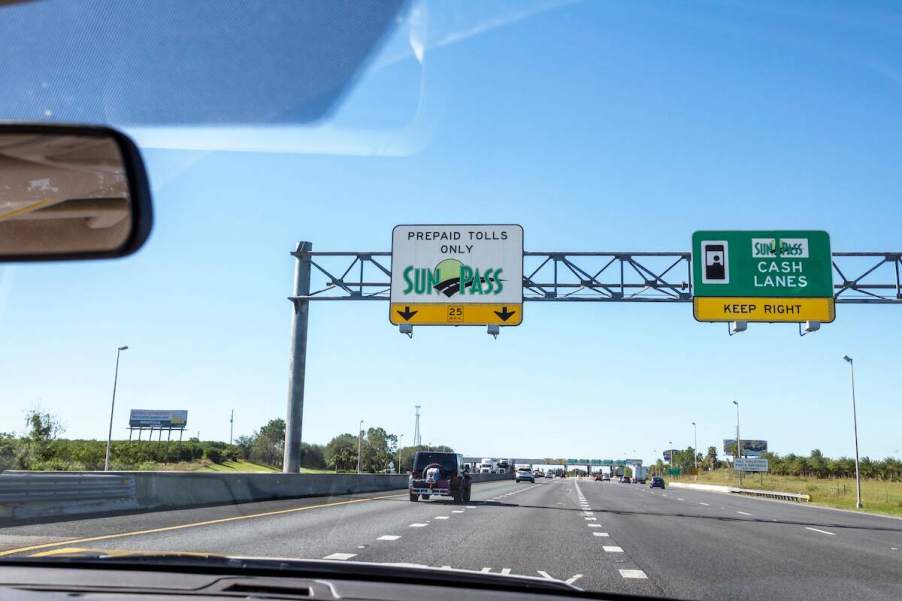
Drive for Free in 15 U.S. States With No Toll Roads
It usually happens on a road trip. You’re driving along and miss the highway sign saying, “Last Free Exit.” The next thing you know, a “Pay Toll in One Mile” sign appears. What is the point of tolls? Where and why do most states have them? Also, which states have no toll roads?
What is the point of tolls?

Tolls generate construction and maintenance funds by charging users a fee each time they use a toll facility. Free roads receive funding for construction and maintenance from taxpayers whether they use those roads or not.
Sometimes, a toll applies only to specific travel lanes of a highway. For instance, a municipality may deem the construction of an additional travel lane for use during peak travel times necessary. However, without taxpayer support, that lane would become a toll lane, saving taxpayers money while transferring the cost to users.
Which 15 states have no toll roads?

According to Uproad, the following 15 states don’t have toll roads:
- Arizona
- Arkansas
- Connecticut
- Hawaii
- Idaho
- Iowa
- Mississippi
- Montana
- Nevada
- New Mexico
- North Dakota
- South Dakota
- Tennessee
- Wisconsin
- Wyoming
That leaves 35 states with toll roads. However, some have only one, including the following:
- Alaska
- Louisiana
- Minnesota
- Missouri
- Nebraska
- Oregon
- Rhode Island
- Utah
Furthermore, some states charge tolls only for unique roadways. For example, Vermont has several toll roads, but only those that summit mountain peaks within the state. And Alaska’s single toll road section passes through the Anton Anderson Memorial Tunnel.
Besides roads, what are other facilities that charge tolls?
Motorists can encounter tolls on bridges, express lanes, turnpikes, and tunnels.
Drivers in the eastern U.S. are likelier to encounter tolls, with Florida having the most, including 12 toll bridges, Toll Guru reports. However, Oklahoma ranks second with 16 turnpikes requiring tolls across the state. Alabama has the following three popular bridges with tolls ranging from $1.50 to $3:
- Joe Mallisham Parkway,
- Foley Beach Express, and
- Montgomery Express.
Why do some states have toll roads but others don’t?

Whether or not a state uses tolls depends on how it funds roadway building and maintenance projects. Early in the nation’s history, states sometimes built toll roads before the tax base could support funding. Other times, taxpayers vote against using taxes for building projects, creating the need for toll structures.
What are some of the most expensive U.S. toll roads?
Uproad says the Chesapeake Expressway in Virginia is the most expensive toll road per mile at $1.05. Next are California’s 17-Mile Drive at 54.4 cents and the Fort Bend Parkway in Houston at 53.3 cents per mile. Those fees are for passenger cars; vehicles with more axles, such as semi-trucks, pay extra.
The most expensive toll road from end to end is the 360-mile-long Pennsylvania Turnpike. It spans the state from east to west and connects major cities like Philadelphia and Pittsburgh. Uproad calculates the cost of driving the entire Pennsylvania Turnpike at approximately 31 cents per mile. That totals $112.91 for a passenger car.
It’s usually possible to avoid paying tolls by driving a different route. Most GPS devices offer an option to calculate toll-free routes while navigating. However, shorter drive times, better-maintained roads, and convenience offset the toll cost.






